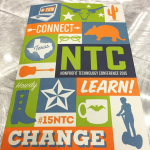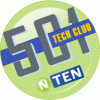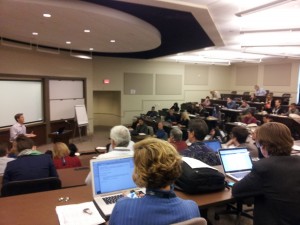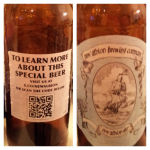(This article was co-authored with Kendra Thornton and was originally posted on Rose is A Rose. Reposted with permission.)
Traveling with families can be a joy that creates a lifetime of memories. Travel expert, Kendra Thornton and I have created these guides to each of our respective home towns. You will find this article full of tips for anyone traveling to Austin or Chicago with their families!
Part 1: Local’s Guide to Austin, TX
By Stacy Dyer
Austin is famous for its music, food, and sports; yet it’s the distinctively “weird” Texan culture that reverberates through visitors, young and old. Families visiting Austin can visit these top spots to get a taste of the quiet beauty and unique culture locals enjoy year-round.
Walk in the Park: Zilker
Zilker Park is one of Austin’s best-loved parks. While swimming in Barton springs can be refreshing, there are plenty of other attractions at Zilker. Don’t miss the long-running Zilker Zephyr miniature train ride and for a little touch of local Austin musical history, visit the statue of Stevie Ray Vaughn next to Lady Bird Lake. There are plenty of sports including weekly soccer tournaments during season and an 18-hole disc golf course. Depending on when you visit, Zilker Park plays host to a variety of special events and performances, some of which are free. In the spring, you can find free Shakespeare in the Park at The Sheffield Hillside Theater and in the summer, Blues on the Green provides regular musical performances. Austin City Limits music festival, hosted at Zilker every fall, provides an intense, immersive experience for every musical taste. During the holidays, a magical Trail of Lights culminates in the towering Zilker Holiday Tree.
6th and Lamar: A “Whole” lot of Weird
Not just a grocery store, Whole Food’s world headquarters is an experience! Even if you aren’t doing your weekly shopping, there is plenty to enjoy at Whole Foods flagship store. Beer lovers can walk through the refrigerated beer aisle. And those with a sweet tooth will enjoy the chocolate fountain in the bakery. Park in the below-ground garage and have your groceries delivered to your car with a special elevator! Top off your shopping expedition by grabbing a quick sandwich or salad bar to enjoy on the outdoor patio. Wash down your lunch with a locally-brewed Sweet Leaf Tea. Stroll across the street to shop at Austin institutions such as Bookpeople or Waterloo Records and buy a “Keep Austin Weird” t-shirt to commemorate your trip.
Where to Stay: Driskill Hotel
The historic Driskill Hotel is a luxurious downtown hotel that provides everything travelers need with distinct Austin style. Young guests are “deputized” upon check-in with an official Driskill Deputy sheriff’s Badge and presented with a certificate signed by Colonel Jesse Driskill, the hotel’s founder. Kids also get a coloring book and crayons, and free cookies! No historic hotel would be complete without a haunting or two; ghost hunters should ask for the official list of ghost stories at check-in.
Where to Eat: Food Trucks
Who wouldn’t want to be served gourmet-quality dishes from a restaurant on wheels? Austin food trailers are unique and delicious. Sample different menus in a kid-friendly lot at the Midway Food Park on S Capital of Texas Hwy, which even boasts a playground! For more, try the food trailer parking lots on South First Street, East Sixth, West Campus, or in the Mueller district. Wherever you go, don’t be afraid to sample something that sounds bizarre! (East Side King serves deep-fried beets so delicious, even the pickiest eaters will love them!)
Check out this map for more spots to bring your kids in Austin, TX!
View Austin kiddo spots in a larger map
Part 2: The Local’s Fun Guide to Chi Town
by Kendra Thornton
There’s a lot to love about Chi Town. It’s one of the birthplaces for American history, and it’s a vital mecca for food, arts, culture and music. Travelers from all over the world find the history and sports magnetism of Chicago to be an incredible adventure. From a local’s perspective, there are a few things that people can miss on the big tours that run the tourism show in Chi Town. Whether you are just stopping in for your first trip or this is your second trip, there are some amazing places to check out next time you’re wandering the Windy City.
Check Out Those Dinosaurs
The Field Museum in Chicago is located right off South Lake Shore Drive, and it’s one of the best places to see some art, culture and history for an afternoon. It’s also a good place for fun recreation if you’re traveling with kids. The Field Museum is most well known for its dinosaur fossils exhibitions, but there are all kinds of seasonal, yearly and one-of-a-kind exhibits that you’ll love to explore. If you’ve visited the museum in the past, you’re guaranteed to find something new the next time you go.
Sail the Waters
If you have the time on your next trip to Chicago, you should definitely take a trip out to see on the Tall Ship Wendy, a pirate boat tour on Lake Michigan. This adventurous ride is made for any sea lover who loves some adventure and lots of good humor. While educational, it’s also quite fun to explore with the entertainers on board, and you’ll get to learn about the area while taking in some incredible sights. There are tons of photo opportunities along the way as well.
Where to Stay in Chi Town
Whether you love the old historic hotels like The Drake or you want something more modern like The Peninsula, there are a variety of different hotels in downtown Chicago that offer incredible views and quick trips to wherever you want to go. To compare all of their rates and get the best ratings on hotels in Chicago, I’ve found Gogobot to be one of the best sites to find information. You can check out all of the four-star and five-star luxury hotels as well as cheap bed and breakfasts and highly rated three-star hotels that may interest you.
Eating Rich for Cheap in Chi Town
Chefs love Chicago. Whether it’s the sports, beer or just that deep-dish pizza, there are a ton of different world-renowned chefs who have started restaurants here. You’ll find some of the best restaurants while exploring the streets of Chicago, but one of the ultimate places to go any time of day is the South Water Kitchen in the Loop. A native Chicagoan makes food here, and the menu reflects that kind of flair and pizzazz. It’s also got all types of classic dishes, which is perfect for those picky eaters in your party.
Special thanks to Kendra for her contribution to this article!
-Stacy











